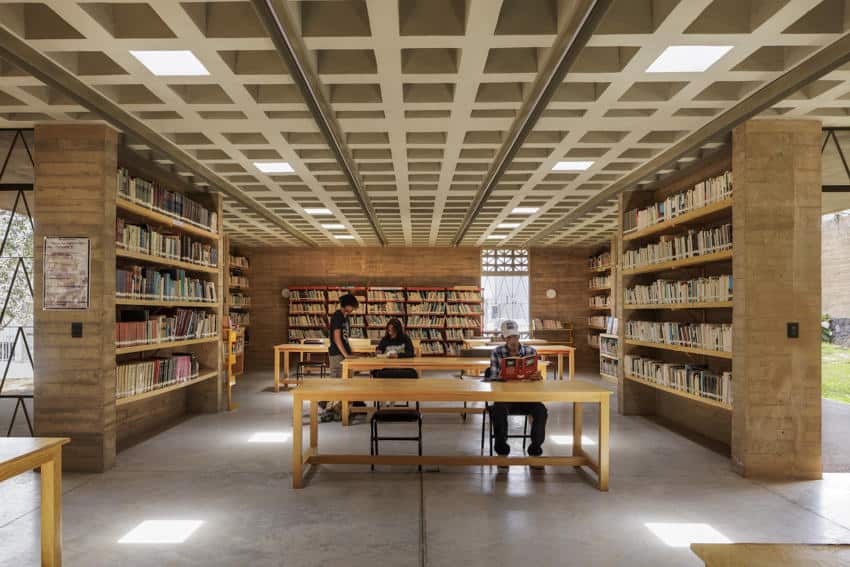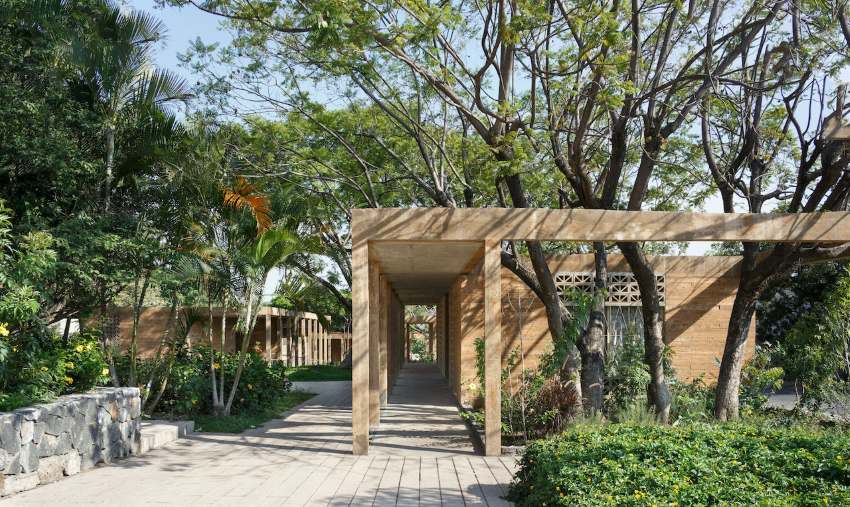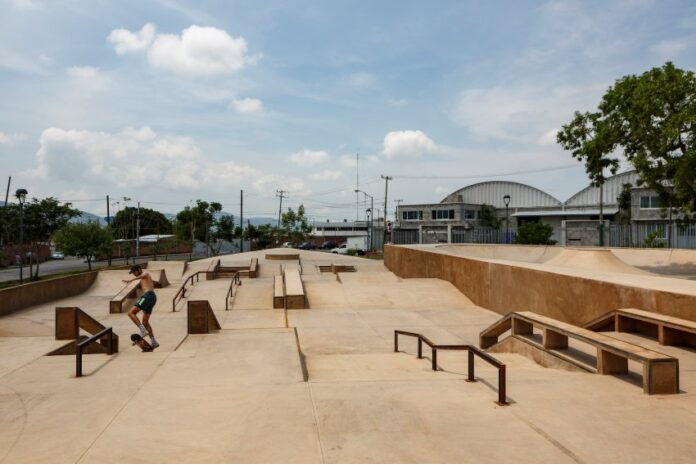Near the industrial zone of Jiutepec, Morelos, in an area that was once practically abandoned, stands the impressive CIVAC Linear Park.
The municipality of Juitepec belongs to the Cuernavaca metropolitan area but has somehow preserved part of its rich historical and cultural identity. It became particularly significant in the 1960s when it built one of the most organized industrial parks in Mexico, known as the Cuernavaca Valley Industrial City (CIVAC), which also became a residential neighborhood inside Jiutepec.

But over time, residential areas of the CIVAC neighborhood near the industrial park turned abandoned and were perceived by residents as dark, isolated and even dangerous. Skateboarders, however, had turned the abandoned area into an informal skate park.
Revitalization came with the creation of the CIVAC Linear Park.
The project was initiated in 2021 as part of the Urban Improvement Program (PMU 2021) of the Ministry of Agrarian, Territorial and Urban Development (SEDATU), which focuses on urban reconstruction in vulnerable areas. The design was created by the renowned Mexican architect Rozana Montiel Saucedo, in collaboration with Claudia Rodríguez, the coauthor of the project.
Today, the linear park connects two neighborhoods, enhancing mobility in the area, and serves as an integrated green space for government offices, community services and resident learning and recreation.
CIVAC Linear Park was conceived to renovate vulnerable urban areas while fostering a sense of belonging and community pride. It also aimed to incorporate green spaces, honoring the area’s existing natural spaces, and so one of the project’s main goals was to minimize the concrete footprint and adapt the design to the natural environment.
The result features intriguing paths shaded by original trees, achieving a unique balance between landscape, architecture and local materials.

For example, the park’s civic center — home to government offices and a wide range of municipal social and community services — was fragmented to fit into the clearings between endemic trees over 50 years old, using porches and platforms of Texcal stone and sand-colored pigmented concrete. Throughout the park, nature and architecture combine, and a series of platforms, terraces and galleries connect the buildings with courtyards, gardens and rest areas, harmonizing them with the natural environment.
“We found a large number of endemic trees in the area that were over 50 years old. The challenge was to incorporate all the existing trees into the design,” the project description explains.
Stretching 1.15 km, the linear park is a continuous pathway that respects the existing vegetation while expanding in certain areas to incorporate sports facilities and playgrounds and reclaim previously hostile spaces.
It culminates in a multipurpose circular forum built with Texcal stone steps, encouraging community interaction. The fountain’s seasonal activation as a public pool has stimulated local commerce, revitalized the surrounding area and provided a recreation alternative on the hottest days.
An all-community hub
The CIVAC Linear Park has become a popular meeting place in Morelos, thanks to the civic complex containing spaces for a ceremonial hall, a first aid center, speech therapy and psychological care workshops and a children’s playground. The civic center includes a public library, a cafeteria and customer service areas. Outside, residents use a purpose-built skate park for either practicing their skate moves or BMX freestyle cycling.
In the civic center library, the primarily wooden design is aesthetically pleasing, featuring an entrance filled with natural light. The structure also utilizes sand-colored pigmented concrete, creating a serene atmosphere and serving as a gateway to culture for visitors. The skate park was built with sand-colored pigmented concrete.
Recognition
Since its opening in 2022, thousands of visitors have frequented the CIVAC Linear Park, a testament to its popularity. The project has also garnered attention in the architectural world, winning awards such as the ADUS LATAM 2023/2024 Award from the prestigious French Saint-Gobain foundation, which recognizes sustainable and innovative architecture. It also received the Obras Cemex 2023 International Edition Award in the Social Value category and was nominated by the National Biennial of Mexican Architecture (FCARM) in the Landscape Architecture, Parks, and Squares category at the Biennial XVIII 2024.
Additionally, it has been nominated for the Mies Crown Hall Americas Prize at the Illinois Institute of Technology, a biennial established to honor excellence in built works of architecture across the Americas.
But perhaps one of the greatest things about the CIVAC Linear Park is how it seamlessly integrates governmental administrative offices with the life of the surrounding community. It serves as a connector for mobility in the city while creating a green oasis that respects and enhances the native environment. It is truly a source of life in numerous ways.
Ana Paula de la Torre is a Mexican journalist and collaborator for various outlets including Milenio, Animal Político, Vice, Newsweek en Español, Televisa and Mexico News Daily.
